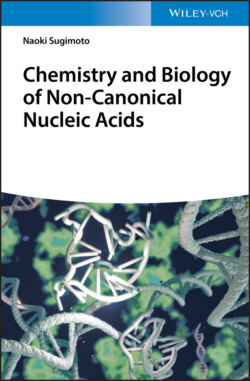Читать книгу Chemistry and Biology of Non-canonical Nucleic Acids - Naoki Sugimoto - Страница 34
2.6.3 Elements in Tertiary Interactions of RNA
ОглавлениеRNAs are commonly represented planarly as their secondary structure. However, most RNAs are folded into their defined tertiary structures that correlate with their unique functions including contribution to the gene regulation. To form a stable tertiary structure, three-dimensional interactions between secondary structure motifs including loop–loop, loop–helix, and helix–helix interactions are indispensable (Figure 2.11) [24].
Figure 2.11 Distribution of RNA tertiary motifs except coaxial stacking of helices in the nonredundant data set of 54 high-resolution crystal structures [24a].
Figure 2.12 A-minor interactions. Examples of hydrogen bonding patterns of consecutive A-minor interactions observed in 23S ribosomal RNA of H. marismortui 50S ribosome (a) and that between 23S and 5S ribosomal RNAs (b) (PDBID: 1FFK). Alphabets and numbers show nucleotide positions in the ribosomal RNAs. Hydrogen bonds are shown in dashed lines. Side view of three consecutive A-minor interactions is shown below.
